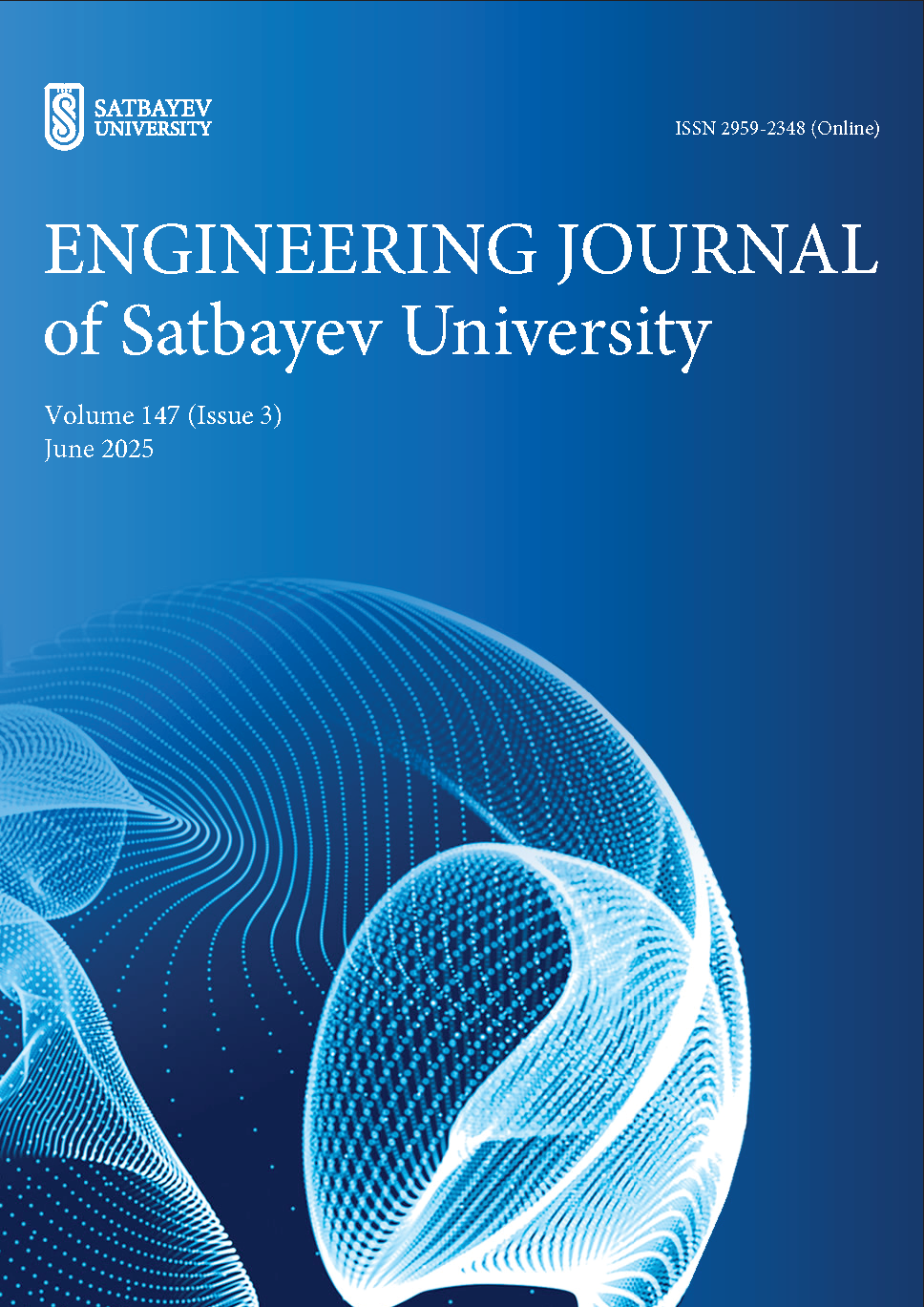Features of mineral formation in the structure of iron ore materials from the position of the state diagram of the system CaO–Fe2O3–SiO2
DOI:
https://doi.org/10.51301/ejsu.2025.i3.03Keywords:
ferrous sand, agglomeration, sintering, iron ore agglomerate, fluxesAbstract
This paper presents the results of a study of the strengthening of iron ore raw materials obtained by oxidative roasting of granules and pellets using gaseous fuel and agglomeration with combustion of solid fuel in the agglomeration layer. Differences in the mechanisms of mineral formation of granules, pellets and agglomerates appear at the stage of liquid-phase strengthening and are due to the different role of iron in forming the strengthening melt. At the same time, in the agglomerate, granules and pellets, iron is in different valence states, affecting the processes' features. Iron can be in a trivalent state in the iron-silicate melt of granules and pellets and is not a silicate-forming component of the charge. The silicate compositions of the binders in the entire studied range of basicities (0.3-1.5) are located along the line of the CaO–SiO2 connection, which is determined using the phase diagram of the CaO–Fe2O3–SiO2 system. During agglomeration, the silicon-containing melt is formed under conditions of excess FeO, which directs the process of mineral formation during the creation of the iron-silicate binder of the agglomerate. Under standard agglomeration conditions, silicate binders with a basicity of 1.0-1.5 are formed in the olivine field of the CaO–FeO–SiO2 phase diagram, covering a wide range of compositions. The processes of mineral formation in batches, by hardened methods, both during the firing of granules, pellets, and during agglomeration, have shown that changing the oxidation potential of the gas phase is an effective lever on the path not only to improving the properties of ferrous sand - a waste product of alumina production, but also to creating both new binders and new types of iron ore raw materials suitable for smelting ferrosilicon.
References
Ibragimov, A.T., & Budon, S.V. (2010). Razvitie tehnologii proizvodstva glinozema iz boksitov Kazahstana. Pavlodar. LLP «Dom pechati».
Zhang, R., Zheng, S., Ma, S. & Zhang, Y. (2011). Recovery of alumina and alkali in Bayer red mud by the formation of andradite-grossularhydrogarnet in hydrothermal process. Journal of Hazardous Materials, (189), 827-835. https://doi.org/10.1016/j.jhazmat.2011.03.004
Evan, K. (2016). The history, challenges and new develop-ments in the management and use of bauxite residueю. Journal of Sustainable Metallurgy, 2, 316-331. https://doi.org/10.1007/s40831-016-0060-x
Trushko, V.L., Utkov, V.A. & Bazhin, V.Y. (2017). Topical-ity and possibilities for complete processing of red mud of aluminous production. Journal of Mining Institute, (227), 547. https://doi.org/10.25515/PMI.2017.5.547
Podgorodetsky, G., Shiryaeva, E., Gorbunov, V. & Kozlo-va, O.A. (2015). Problem of Efficient Red Mud Processing, Search for Solutions. Ecology and Industry of Russia, 19(12), 46-53. https://doi.org/10.18412/1816-0395-2015-12-46-53
Zinoveev, D.V., Grudinskii, P.I., Dyubanov, V.G., Kovalen-ko, L.V. & Leont’ev, L.I. (2018). Global recycling experi-ence of red mud - a review. Part i: pyrometallurgical meth-ods. Izvestiya. Ferrous Metallurgy, 61(11), 843-858. https://doi.org/10.17073/0368-0797-2018-11-843-858
Zhaobo, L., & Hongxu, L. (2015). Metallurgical process for valuable elements recovery from red mud – a review. Hy-drometallurgy, 155, 29-43. https://doi.org/10.1016/J.HYDROMET.2015.03.018
Kaussen, F., & Friedrich, B. (2015). Reductive smelting of red mud for iron recovery. Chemie Ingenieur Technik, 87(11), 1535-1542. https://doi.org/10.3390/met10010032
Grenerczy, G., & Wegmuller, U. (2011). Persistent scatterer interferometry analysis of the embankment failure of a red mud reservoir using ENVISAT ASAR data. Natural Hazards, 59, 1047-1053. https://doi.org/10.1007/s11069-011-9816-6
Klauber, C., Grafe, M. & Power, G. (2011). Bauxite residue issues: II. Options for residue utilization. Hydrometallurgy, 108(1-2), 11-32. https://doi.org/10.1016/j.hydromet.2011.02.006
Grafe, M., & Klauber, C. (2011). Bauxite residue issues: IV. Old obstacles and new pathways for in situ residue bioreme-diation. Hydrometallurgy, 108(1-2), 46-59. https://doi.org/10.1016/j.hydromet.2011.02.005
Liu, Y., & Naidu, R. (2014). Hidden values in bauxite resi-due (red mud): recovery of metals. Waste Management, 34(12), 2662-2673. https://doi.org/10.1016/j.wasman.2014.09.003
Khairul, M. A., Zanganeh, J. & Moghtaderi, B. (2019). The composition, recycling and utilisation of Bayer red mud. Re-sources Conservation and Recycling, 141, 483-498. https://doi.org/10.1016/j.resconrec.2018.11.006
Xiao, J., Peng, Y., Ding, W., Chen, T., Zou, K., & Wang, Z. (2020). Recovering scandium from scandium rough concen-trate using roasting -hydrolysis -leaching process. Green Separation and Extraction Processes, 8(3), 365-380. https://doi.org/10.3390/pr8030365
El-Hussiny, N.A., Mohamed, F.M. & Shalabi, M.E.H. (2011). Recycling of mill scale in sintering process. Science of sintering, (43), 21-31. https://doi.org/10.2298/sos1101021e
Zhunusova, A., Zhunusov, A., Bykov, P., Bakirov, A., Za-yakin, O. & Kenzhebekova, A. (2024). Research of physi-cochemical properties of ferrous sands from alumina pro-duction. Acta Metallurgica Slovaka, 30(4), 161-166. https://doi.org/10.36547/ams.30.4.2086
Zhunussova, A., Bykov, P., Zhunusov, A., & Kenzhe-bekova, А. (2024). Research of the production of iron ore sinter from bauxite processing waste. Kompleksnoe Ispol-zovanie Mineralnogo Syra = Complex Use of Mineral Re-sources, 329(2), 73-81. https://doi.org/10.31643/2024/6445.19
Malysheva, T.Ja., Dolickaja, O.A. (2004). Petrografija i mineralogija zhelezorudnogo syr'ja: Uchebnoe posobie dlja vuzov. Moscow: MISIS.
Zhunusov, A.K., Bykov, P.O., Kenzhebekova, A.E., Zhunussova, A.K, & Nabawi, R.A. (2024). Study of the iso-thermal kinetics of reduction of sinter from mill scale. Kom-pleksnoe Ispolzovanie Mineralnogo Syra = Complex Use of Mineral Resources, 328(1), 59-67. https://doi.org/10.31643/2024/6445.07
Downloads
Published
How to Cite
Issue
Section
License
Copyright (c) 2025 Engineering Journal of Satbayev University

This work is licensed under a Creative Commons Attribution-NonCommercial-NoDerivatives 4.0 International License.
<div class="pkpfooter-son">
<a rel="license" href="http://creativecommons.org/licenses/by-nc/4.0/"><img alt="Creative Commons License" style="border-width:0" src="https://i.creativecommons.org/l/by-nc/4.0/80x15.png"></a><br>This work is licensed under a <a rel="license" href="http://creativecommons.org/licenses/by-nc/4.0/">Creative Commons Attribution-NonCommercial 4.0 International License</a>.
</div>





